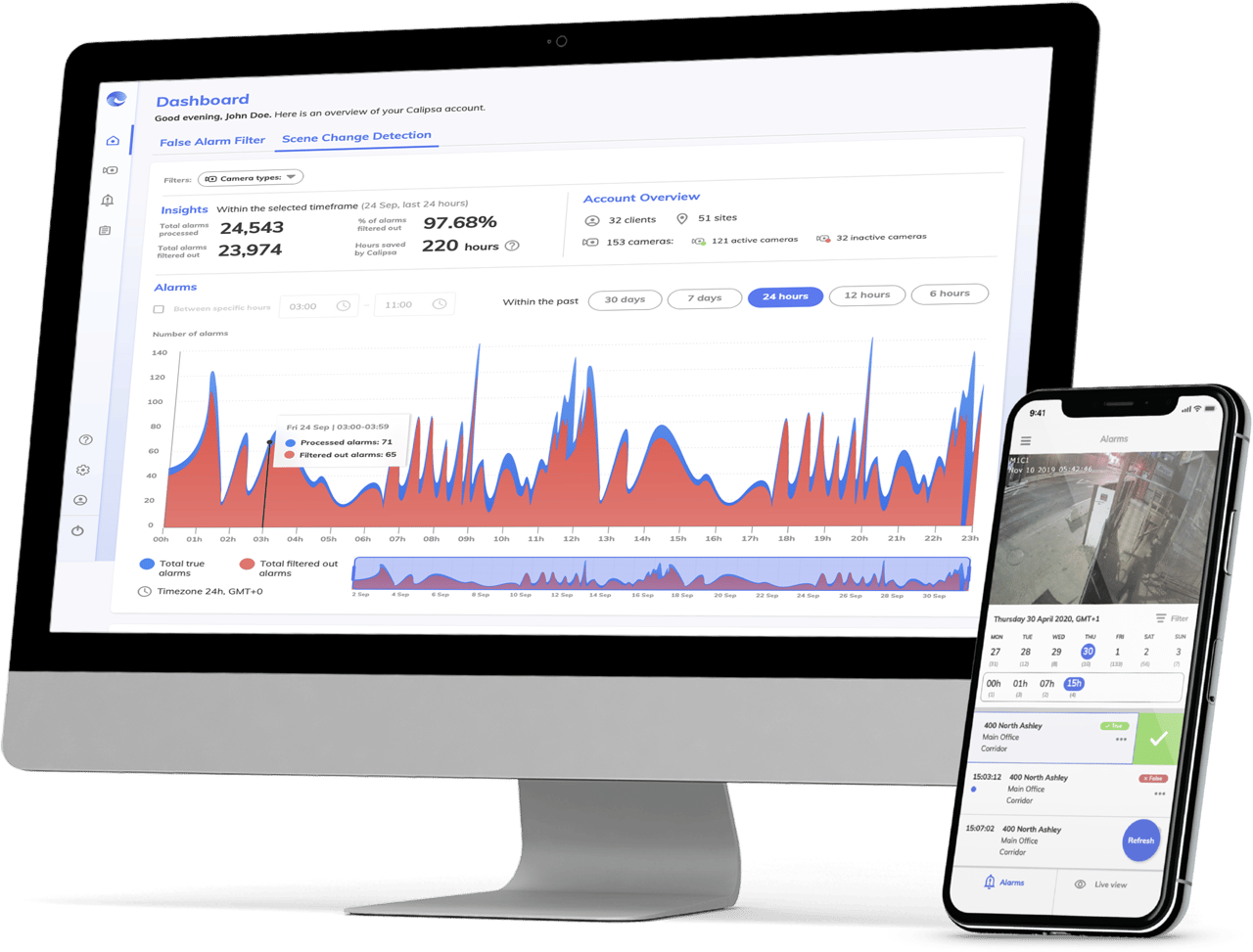december 2021

Education & Training
By Brian Baker, Contributing Writer
The Value in Event-Driven Video Analytics
Today’s enterprise security directors and central station managers are looking at cloud-based, event-driven analytic software to help tame the “noise” created by hundreds, or even thousands, of onsite and remote video surveillance cameras and events. Without automated assistance, the amount of data these cameras supply can overwhelm even the best-trained security officers and monitoring personnel.
With the incredible growth in the video surveillance market, professional services company Accenture estimated in 2020 that less than 1% of video data was likely to be analyzed, leaving 99% of video known as “dark data.”
Newer smart technology embedded within security cameras or companion servers creates alerts based on motion detected within a camera’s view. No longer required to monitor all video, security personnel can focus only on alerts deemed by the surveillance system as potentially threatening.
However, while this technology detects activity, it doesn’t accurately discern differences between the movements of a human or vehicle as opposed to wind-blown foliage or stray animals. As a result, 95% or more of automated camera alerts are false. Non-threatening events waste monitoring operators’ time and attention, and it’s not unusual for some organizations to shut off selected cameras to escape the din of false alarms.
Machine Learning
Detecting the differences in what causes motion is where recently developed artificial intelligence (AI)-based, event-driven software shines. The technology uses a subset of AI known as machine learning, which is capable of absorbing knowledge somewhat like the human brain. Software developers expose the software to millions of images of humans and vehicles. Over time, and with repeated corrections by its human trainers, the software memorizes the data and makes predictions based on various situations. It begins to generalize the learned concepts and apply them to never-before-seen images.
A cat can be used to describe the machine learning process. Ask 10 people to describe a cat, and you’ll likely get 10 different descriptions based on breed, size, fur color and other features. However, all would recognize the other’s descriptions as some variety of a cat.
With analytics like this, alarm alerts are no longer automatically sent to monitoring stations. Instead, the cloud-based software receives several freeze-frame images from the event. The AI-based software eliminates nuisance alarms and alerts monitoring operators to events containing humans or vehicles in less than a second. The intended result is a large reduction in false alarms. Once deployed, the software continues learning and becomes increasingly accurate.
For security teams, the taming of false alarm noise means genuine alarms aren’t overlooked, and the results should reflect better operational efficiency, situational awareness and response times. Additionally, event-driven video analytics can help reduce human error and human fatigue.
While many security experts primarily view event-driven video analytics as a tool for reducing false alarms, the software’s capabilities continue to grow. For example, some assisted living communities use analytics to spot vulnerable elderly patients wandering the grounds without a family member or nurse present. Corporate facility managers can receive alerts when employees remain onsite too long after closing or enter unauthorized areas.
Detecting the differences in what causes motion is where recently developed AI-based, event-driven software shines.
Color detection allows an organization to ignore the movements of employees wearing company-issued yellow jackets, for example. Users may receive alerts only when humans or vehicles enter doorways or gates. Operators can receive loitering alerts when a person or object stays in a scene beyond a specified time limit. Watchlists enable users to upload photos of objects to observe — or ignore.
Event-Driven Analytics
Recorded video is a significant asset for all enterprise security professionals during forensic analysis or investigations. Event-driven analytics can search alarms containing objects of a similar appearance from all or only selected cameras. The same software algorithm enables the tracking of an object across multiple cameras, presenting the results in a shareable video.
Such AI-based software is available in a Software as a Service (SaaS) model. For organizations with a mix and match system of Internet Protocol (IP) and analog cameras, analog devices can be connected to the cloud using a digital video recorder or IP converter.
When choosing a video analytics solution, look for one that offers plug-and-play capabilities across a wide range of camera types. This can eliminate the time-consuming process of soak tests and related system downtime. During a test period, choose a system’s most alarming cameras to see if false alarms typically received are reduced.
The broad scope of artificial intelligence technologies increases the value of many electronic security systems, but perhaps none as much as remote video surveillance. Analytics make video a proactive tool and information source.
Event-driven monitoring with analytics provides security leaders and their teams with only the most valuable video data. The software turns video into preventive intelligence while using the surveillance camera system an organization already has in place.
About the Author
Brian Baker is Chief Revenue Officer for U.K.-based Calipsa, a provider of deep learning-powered analytics for false alarm reduction. Image courtesy of Baker





